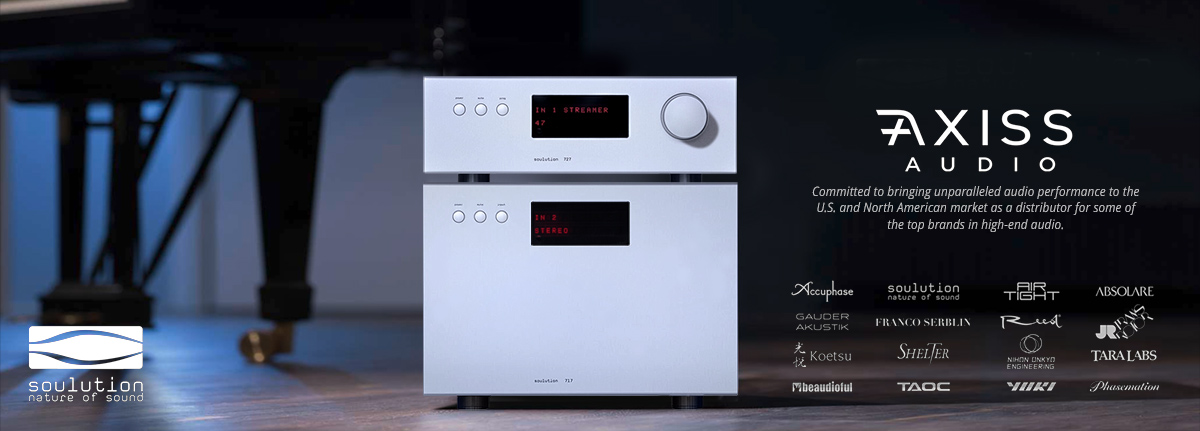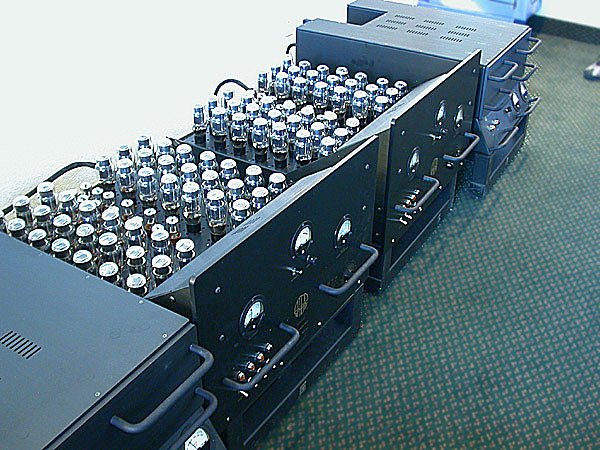Anyone familiar with Symphonic Line Kraft 400's?
Reading the subjective description, makes me salivate:
"... hat could be so entirely special about a pair of amplifiers?
Everything. These are magnificent beasts.
As Peter Forsell has pointed out, what we hear from the speaker is, in essence, the electricity itself. In this sense, the Kraft 400s stand alone as the ultimate expression of purity in design when it comes to the power supply and short, simple signal paths. This paradoxical fusion of gargantuan and minimalist concepts would prove a futile gesture indeed if it didn't actually serve the music in some mighty special way. But it does—magically.
The foundation of their sound was the richly complex and textured, powerful, transparent, and huge soundstage the 400s hung about the speakers and the listening room. The ambient soundfield had an integrity that I had never before experienced. They developed a spread and layering of soundstage of perfect control—all musical elements absolutely stable. The classic descriptions of wide, deep, layered, and so on lose their meaning in this context. Put a CAT/Forsell combo or a JP-80MC and a JS1/J1 in front of the 400s, and the original acoustic is simply there before you. Cue up an Insider or the Symphonic Line RG-8 phono cartridge on The Forsell, and you are transported. There are no room boundaries to overcome, no sense of displacement of your listening room's acoustic. You're simply there...."
http://www.stereophile.com/content/symphonic-line-kraft-400-monoblock-power-amplifier
Reading the subjective description, makes me salivate:
"... hat could be so entirely special about a pair of amplifiers?
Everything. These are magnificent beasts.
As Peter Forsell has pointed out, what we hear from the speaker is, in essence, the electricity itself. In this sense, the Kraft 400s stand alone as the ultimate expression of purity in design when it comes to the power supply and short, simple signal paths. This paradoxical fusion of gargantuan and minimalist concepts would prove a futile gesture indeed if it didn't actually serve the music in some mighty special way. But it does—magically.
The foundation of their sound was the richly complex and textured, powerful, transparent, and huge soundstage the 400s hung about the speakers and the listening room. The ambient soundfield had an integrity that I had never before experienced. They developed a spread and layering of soundstage of perfect control—all musical elements absolutely stable. The classic descriptions of wide, deep, layered, and so on lose their meaning in this context. Put a CAT/Forsell combo or a JP-80MC and a JS1/J1 in front of the 400s, and the original acoustic is simply there before you. Cue up an Insider or the Symphonic Line RG-8 phono cartridge on The Forsell, and you are transported. There are no room boundaries to overcome, no sense of displacement of your listening room's acoustic. You're simply there...."
http://www.stereophile.com/content/symphonic-line-kraft-400-monoblock-power-amplifier

















